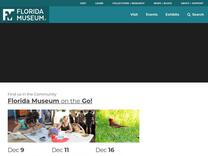Notes From Nature celebrates 10 years of community science – Research News https://www.floridamuseum.ufl.edu/science/notes-from-nature-celebrates-10-years-of-community-science/
There are more than 1,000 natural history museums around the world, each tasked with studying and preserving a portion of our planet’s natural and cultural heritage. Notes From Nature is an online platform that allows anyone with an internet connection to advance that mission by helping move valuabl
Pinson • May 2, 2023 Since it got its start in 2013, more than 18,000 volunteers have

